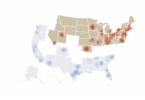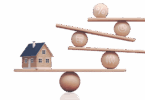Short List
What’s Trending
Market numbers in context
Distressed Sales Fall
Since 2012, distressed home sales have declined 11%.
Distressed home sales fell from 26 percent of the U.S. home sales market in 2012 to 17 percent in 2013 and 15 percent in the first quarter of this year, according to NAR. The group expects distressed sales will account for just a single-digit market share by the end of the year.
All-cash home purchases, meanwhile, rose from 29 percent in 2012 to 31 percent in 2013 and 33 percent in the first quarter of this year. This could reflect increasing consumer confidence as the economic recovery continues.
Distressed home sales, popular with investors who pay cash, have declined in the past two years, yet the share of all-cash purchases has risen, says NAR chief economist Lawrence Yun. A majority of foreign buyers pay cash as well, and the five-year bull run of the stock market has provided financial wherewithal among higher-wealth households, Yun says.
Price Growth Slows
In the last year, the national median existing single-family home price has increased by an average of 13.65%.
Home prices continued to rise in most U.S. metropolitan areas in the first quarter of 2014, albeit at a slower rate, according to NAR. The national median existing single-family home price was $191,600 in the first quarter, up 8.6 percent from $176,400 in the same period a year ago. Home prices had risen 10.1 percent in the fourth quarter of 2013 compared to Q4 2012.
The median existing single-family home price rose in 125 of the 170 metro areas tracked by NAR, with 37 cities posting double-digit increases and 45 cities recording declines.
The cooling rate of price growth is needed to preserve favorable housing affordability conditions in the future, but we still need more new-home construction to fully alleviate the inventory shortages in much of the country, says Lawrence Yun, NAR chief economist.
Affordable For Most
In one quarter, the affordability index of new and existing homes increased by 0.8%.
Stable mortgage rates and lower median home prices gave housing affordability a slight boost in the first quarter, according to the National Association of Home Builders (NAHB)/Wells Fargo Housing Opportunity Index.
The study finds that 65.5 percent of new and existing homes sold through March this year were affordable to families who earn the U.S. median income of $63,900. Thats an increase from the 64.7 percent recorded in the fourth quarter of 2013. The national median home price declined 4.9 percent in the first quarter, from $205,000 to $195,000, but interest rates remained virtually unchanged.
As home prices and mortgage interest rates are unlikely to go down, the first quarter (index) is another indicator that this is an opportune time to buy, NAHB Chief Economist David Crowe says.







